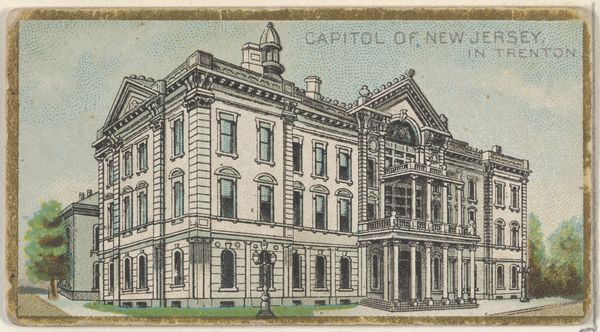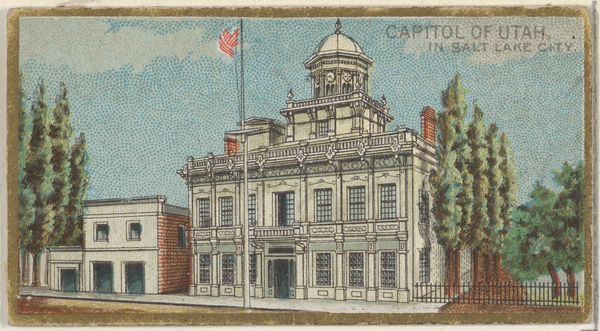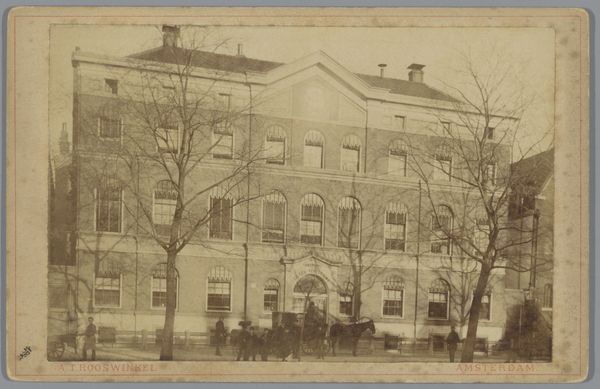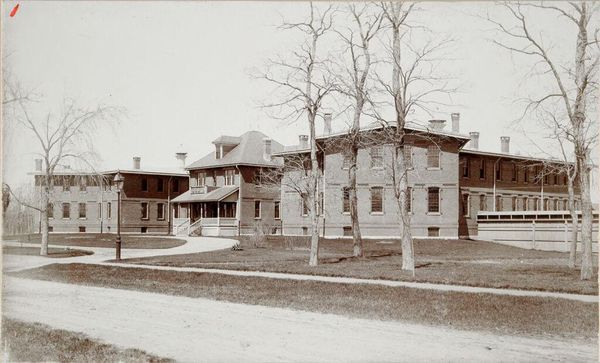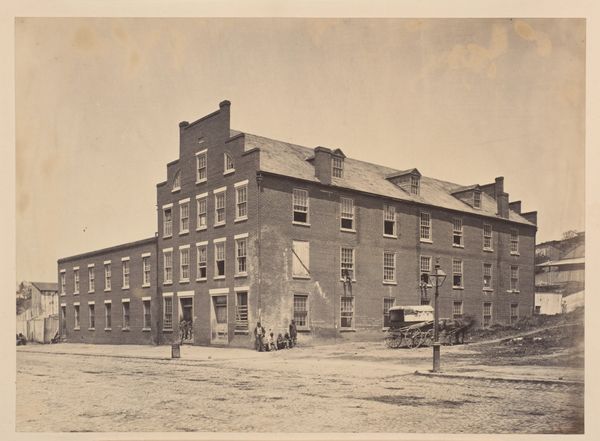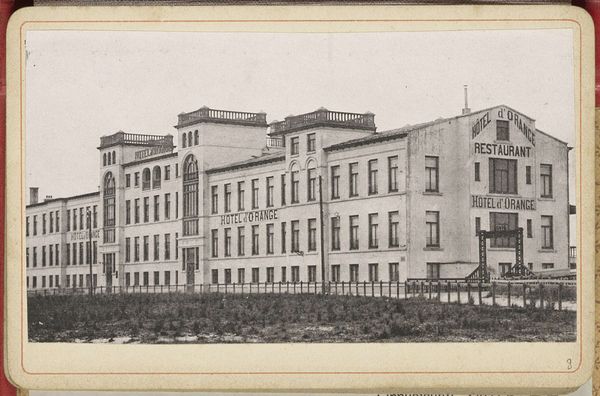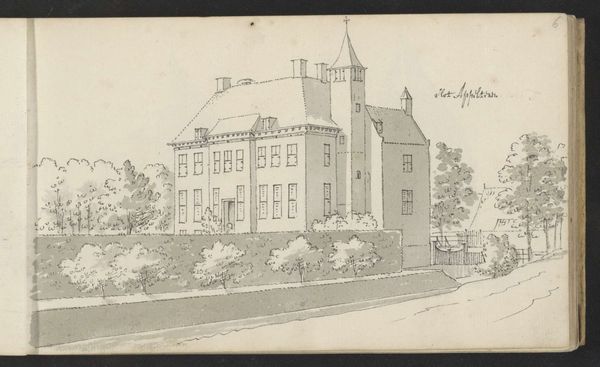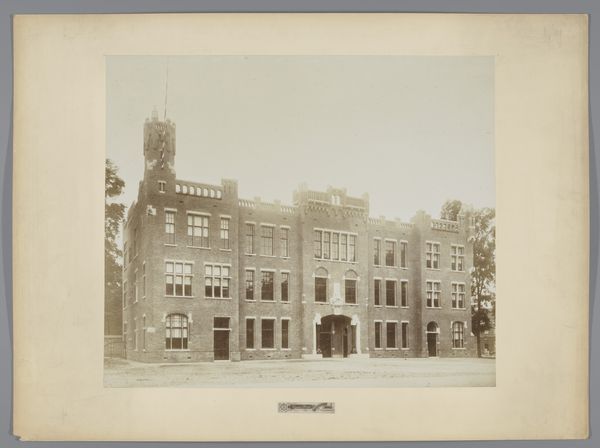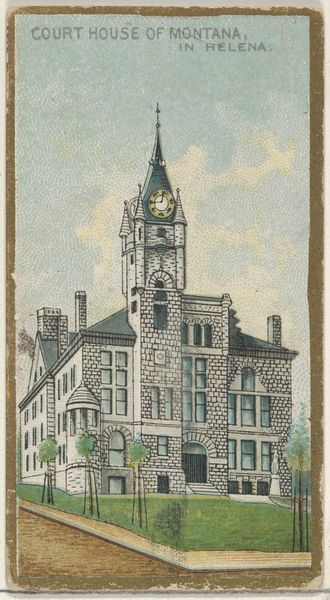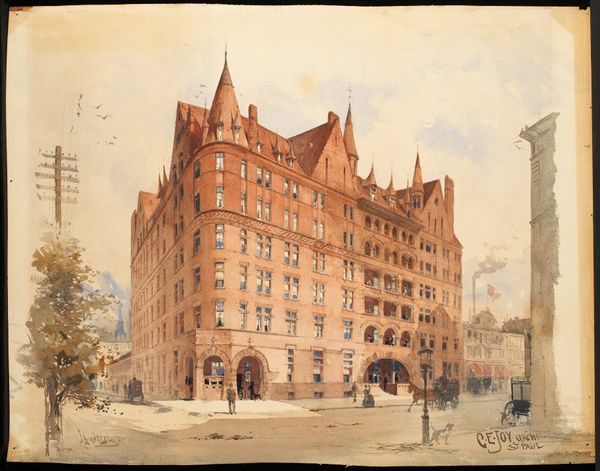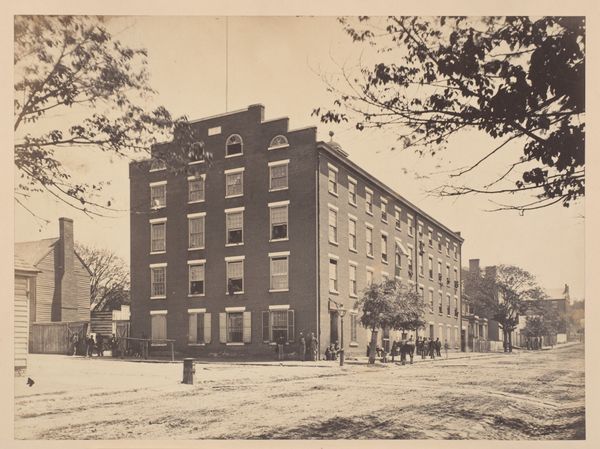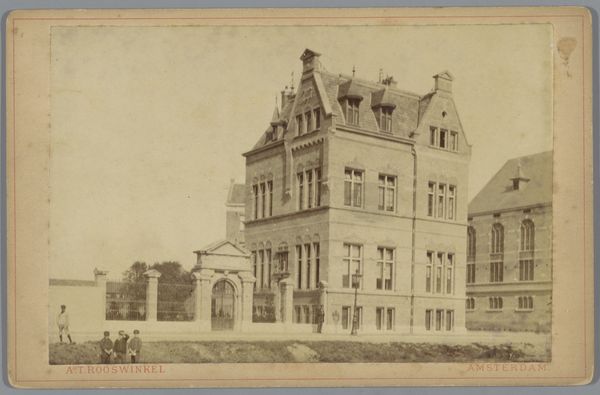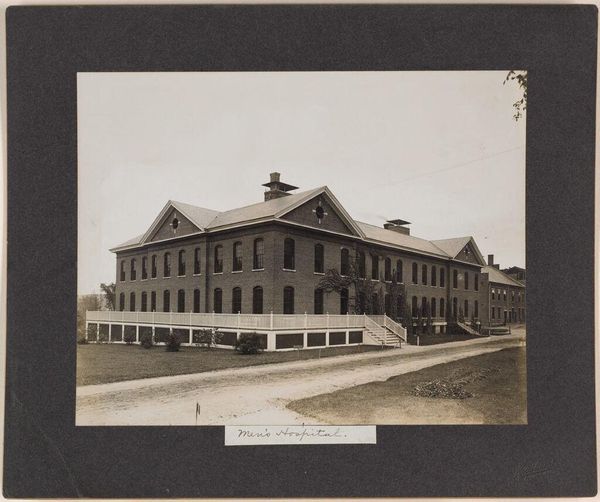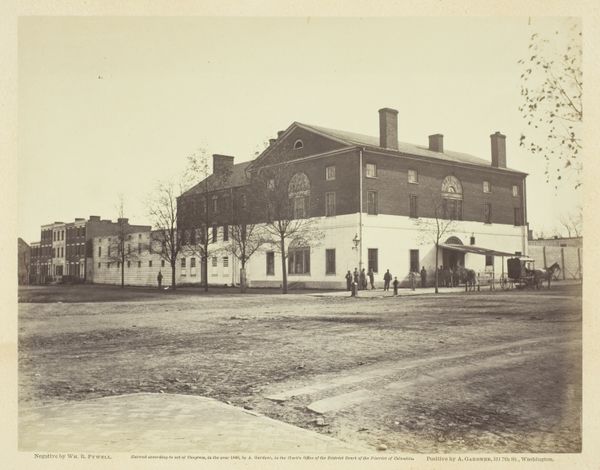
Capitol of Dakota in Bismarck, from the General Government and State Capitol Buildings series (N14) for Allen & Ginter Cigarettes Brands 1889
0:00
0:00
drawing, coloured-pencil, print
#
drawing
#
coloured-pencil
# print
#
coloured pencil
#
cityscape
#
academic-art
#
watercolor
#
building
Dimensions: Sheet: 1 1/2 x 2 3/4 in. (3.8 x 7 cm)
Copyright: Public Domain
Curator: Let's consider this piece entitled "Capitol of Dakota in Bismarck," made in 1889. It's part of the "General Government and State Capitol Buildings series (N14)" by Allen & Ginter, primarily rendered in colored pencil and print. Editor: It feels like a faded dream, doesn’t it? There’s a quiet stateliness to the building itself, but the colors suggest something almost…vanished. Curator: I agree. The piece showcases a fairly traditional composition; observe how the architectonics and color theory harmonize to offer a seemingly classical building in its nascent urban setting. Note especially how its symmetry speaks to a sense of permanence, aspiration to civilization. Editor: But "civilization" for whom? Allen & Ginter produced these as collectible cards for cigarettes. It begs the question of what narratives of nation-building were being sold alongside tobacco products in a time marked by violent expansion and the systematic erasure of Indigenous populations. Was this Dakota vision part of a campaign? Curator: The artwork is not about the ethics, it about the construction, color contrasts and architectural depictions. The chromatic value adds a sense of structure... Editor: Color isn't neutral. That soft palette romanticizes a reality, obscuring what likely were much harsher conditions of life at the time for many, especially considering the context of westward expansion, the Dawes Act. So it must be considered what stories does this silence? Curator: Even the application of colors adheres to a set paradigm of representation. The piece achieves balance by rendering nature and building using similarly diffused tonal ranges... The colors also seem to bleed out making the piece have more of a stylistic element. Editor: But in that blurring, the image invites reflection. What does it mean to "build" a capitol on land that was taken through coercion? The soft application also seems like an evasion of more critical discussions, and it creates more critical insights. Curator: Perhaps...it would seem, at least, we've uncovered more profound layers beyond mere representation. Editor: Indeed, the visual delicacy makes a conversation inevitable on whose "visions" were prioritized.
Comments
No comments
Be the first to comment and join the conversation on the ultimate creative platform.
